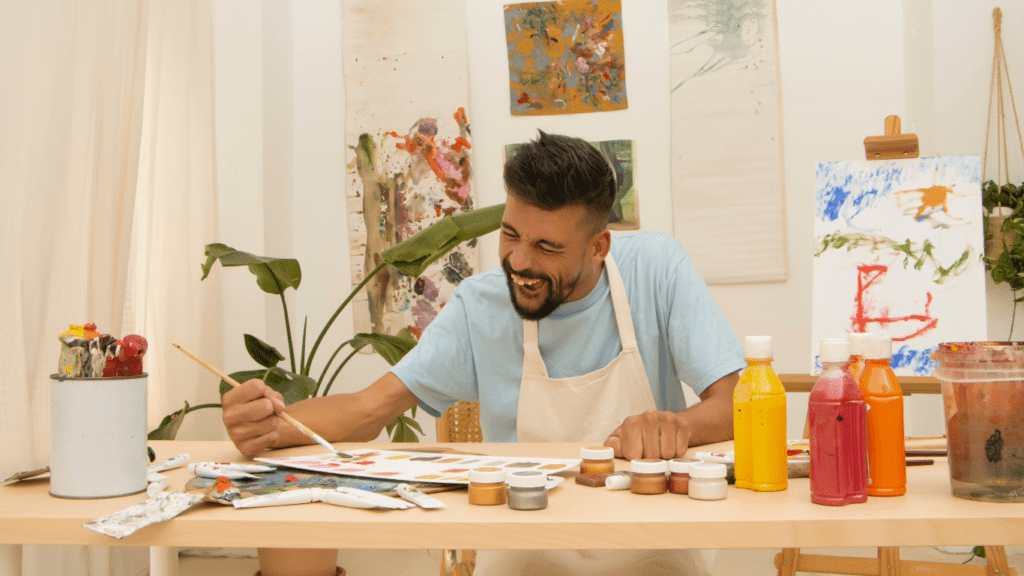Immersing myself in the world of art has always been a passion of mine, but when augmented reality (AR) entered the scene, it took creativity to a whole new level. With AR technology, I’ve discovered a dynamic way to blend the physical and digital realms, breathing life into static art forms. From interactive paintings that respond to touch to sculptures that unveil hidden elements through a smartphone lens, the possibilities are as limitless as the imagination.
Exploring the intersection of art and technology, I’ve delved into the realm of creating interactive experiences that transcend traditional boundaries. By harnessing the power of AR, I’ve seen how art can engage, provoke, and inspire in ways never thought possible. Join me on this journey as we unlock the potential of AR in shaping the future of interactive artistry.
Exploring the Basics of Augmented Reality
What Is Augmented Reality?
Augmented Reality, commonly known as AR, is a technology that superimposes digital information such as images, videos, or 3D models onto the real world environment. It enhances the viewer’s perception of the physical world by adding interactive elements that can be seen through AR-enabled devices like smartphones or tablets.
How Is Augmented Reality Used in Art?
In art, Augmented Reality is utilized to create immersive and interactive experiences for viewers. Artists can overlay digital content onto their physical artwork, allowing for dynamic storytelling, hidden layers of meaning, and interactive components. This technology enables artists to push the boundaries of traditional art forms by engaging audiences in unique and innovative ways.
Benefits of Using Augmented Reality in Art
Augmented Reality (AR) offers numerous advantages when incorporated into art, revolutionizing the way viewers engage with artistic creations.
Enhancing Viewer Engagement
AR elevates viewer engagement by offering interactive art experiences that captivate audiences. By overlaying digital content onto physical artwork, AR enables viewers to interact with pieces in a dynamic and immersive manner. This enhanced engagement allows audiences to delve deeper into the artwork, fostering a more profound connection between the viewer and the art.
Expanding the Boundaries of Creativity
Integrating AR into art breaks conventional boundaries, enabling artists to explore new realms of creativity. With AR technology, artists can incorporate hidden layers, interactive components, and dynamic storytelling into their creations. This expansion of creative possibilities pushes artists to think outside the box and experiment with innovative ways to express themselves, resulting in truly unique and boundary-pushing art forms.
Creating Interactive Art with Augmented Reality
Augmented reality (AR) offers endless possibilities for artists to create immersive and interactive art experiences. By leveraging AR technology, artists can engage their audience in innovative ways, bridging the physical and digital worlds seamlessly.
Tools and Technologies Needed
To embark on your journey of creating interactive art with augmented reality, you will need the following tools and technologies:
- AR Development Platform: Choose a robust AR development platform like Unity or ARCore to build your interactive art projects.
- 3D Modeling Software: Utilize 3D modeling software such as Blender or Maya to create and manipulate digital assets for your AR artworks.
- Smartphone or Tablet: Use a compatible smartphone or tablet to showcase your AR art installations to viewers.
- Marker or Trigger Image: Create a marker or trigger image that activates the AR content when scanned by a mobile device.
- Programming Skills: Basic programming skills in languages like C# or JavaScript can help you add interactivity to your AR creations.
Step-by-Step Guide to Starting Your First Project
Embark on your first interactive AR art project with these simple steps:
- Conceptualize Your Idea: Develop a clear concept for your interactive AR artwork, considering how you want users to engage with your creation.
- Create Digital Assets: Design and model the digital elements of your artwork using 3D modeling software, ensuring they are optimized for AR integration.
- Choose an AR Development Platform: Select an AR development platform that aligns with your project requirements and offers the features you need.
- Develop Interactive Elements: Use programming skills to add interactive elements like animations, sound effects, or touch interactions to enhance user engagement.
- Test and Refine: Test your AR art project on different devices to ensure smooth functionality and make adjustments as needed to improve the user experience.
- Showcase Your Artwork: Display your interactive AR artwork in a suitable location, providing viewers with instructions on how to access and interact with the augmented reality content.
By following these steps and leveraging the right tools and technologies, you can embark on a rewarding journey of creating captivating interactive art experiences with augmented reality.
Challenges Faced in Interactive Augmented Reality Art
In creating interactive augmented reality art, several challenges may arise, ranging from technical aspects to creative and conceptual considerations.
Technical Challenges
When delving into interactive augmented reality art, technical challenges may present themselves. These can include issues with AR development platforms, compatibility between different software tools, and ensuring seamless integration of digital elements with the physical environment. Artists often encounter challenges in optimizing the performance of AR applications on various devices, such as smartphones and tablets. Additionally, maintaining the stability and accuracy of AR tracking systems poses a common hurdle in creating immersive interactive experiences for viewers.
Creative and Conceptual Challenges
Engaging in interactive augmented reality art also involves creative and conceptual challenges. Artists may find it challenging to seamlessly blend physical and digital elements to create cohesive and meaningful art pieces. Balancing the interactive components with the overall artistic vision can be a complex task, requiring a deep understanding of both traditional art principles and modern technology. Furthermore, conceptualizing interactive narratives that resonate with viewers and elicit emotional responses adds another layer of complexity to the creative process. Overcoming these challenges demands innovative thinking, experimentation, and a willingness to push the boundaries of traditional art forms in the digital age.
Future Trends in Augmented Reality Art
Innovations on the Horizon
Looking ahead, the future of augmented reality (AR) art holds exciting innovations that will continue to push boundaries and redefine artistic experiences. As technology advances, we can expect to see more sophisticated AR tools that enable artists to create even more immersive and interactive artworks. Enhanced AR features like improved object recognition, real-time collaboration capabilities, and enhanced spatial mapping will empower artists to explore new creative possibilities and engage audiences in novel ways.
Potential Impact on the Art World
The potential impact of augmented reality (AR) on the art world is immense and far-reaching. With the growth of AR art, traditional artistic mediums are merging with cutting-edge technology, opening up a new realm of possibilities for creative expression. AR art has the potential to democratize art by making it more accessible to a broader audience and breaking down barriers to engagement. As AR continues to evolve, it will undoubtedly influence how art is created, experienced, and understood, shaping the future of the art world in profound ways.



